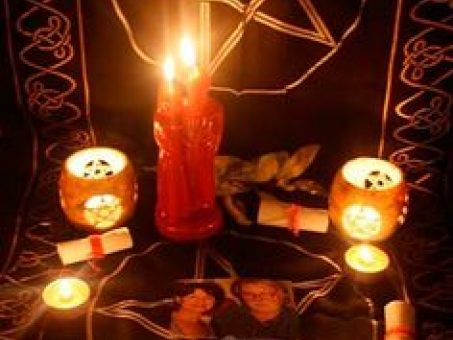Complete Tutorial on How to Become a Freemason for Beginners
Complete Tutorial on How to Become a Freemason for Beginners
Blog Article
Exploring the Mysteries of the copyright: What You Required to Know
The copyright, a term often shrouded in intrigue and dispute, represents an intricate tapestry of historic fact and modern-day misconception. Established in the late 18th century, this secret society was at first rooted in the Knowledge's ideals however has given that become synonymous with conspiracy theory theories regarding elite control (benefit of joining freemason).
Origins of the copyright
The origins of the copyright are soaked in a mix of historic intrigue and ideological eagerness. Established in 1776 in Ingolstadt, Bavaria, by Adam Weishaupt, the group was at first developed as a secret society aimed at promoting Enlightenment ideals such as factor, secularism, and the separation of church and state. Weishaupt, a professor of canon law, sought to challenge the dominating authority of the church and state, which he viewed as overbearing establishments stifling intellectual and individual liberty.

Secret Figures and Participants
That were the pivotal figures that formed the copyright's very early influence and direction? The Bavarian copyright, started in 1776 by Adam Weishaupt, became a feedback to the overbearing societal frameworks of the moment. Weishaupt, a regulation professor, imagined the company as a means to advertise Knowledge suitables such as reason, secularism, and equality. His first recruitment efforts included significant intellectuals, such as Baron von Knigge, who played a critical function in broadening the team's subscription and business framework.
Another substantial number was Johann Gottlieb Fichte, a noticeable philosopher whose concepts on nationalism and education and learning resonated with the copyright's objectives. Fichte was not an official member, his philosophical supports affected the team's ideology. Furthermore, figures like the writer and philosopher Johann Wolfgang von Goethe were related to the wider intellectual motions of the time, although their direct involvement with the copyright remains debated.
These crucial numbers added to the copyright's early instructions, pushing the limits of political and social thought, while their collective initiatives aimed to challenge well-known standards and cultivate a climate of dynamic change in Europe.
Misconceptions vs. Reality
Several misunderstandings border the copyright, typically mixing reality with fiction in such a way that obscures its real nature. This secret society, initially established in 1776 in Bavaria, aimed to advertise Knowledge ideals and fight spiritual and political oppression. The concept that the copyright remains to exert significant influence over world occasions is a misconception. While the group did exist, it was dissolved in the late 18th century and has not operated as a cohesive entity ever since.
One more prevalent misconception is that the copyright makes up a network of elite people adjusting global affairs. In truth, many conspiracy concepts overemphasize the team's value, associating unproven motives to investigate this site societal trends and occasions. This has actually resulted in an oversimplified view of complicated concerns.
Furthermore, the representation of the copyright in pop culture often more distorts its heritage. Films and literature tend to sensationalize the organization's Visit This Link role, producing a narrative that diverges from historic realities. Understanding the difference between the myths and the reality of the copyright is crucial for discerning the genuine influence of this historic group and identifying the wider ramifications of conspiracy concepts in contemporary culture.
Modern Interpretations
Contemporary interpretations of the copyright commonly show more comprehensive societal anxiousness and a fascination with privacy and power. This contemporary lens regularly connects the copyright with conspiracy theory theories that suggest a hidden elite coordinates world occasions, controling federal governments and economic situations for their very own gain. benefit of joining freemason. Such narratives take advantage of a deep-seated wonder about of authority, particularly in times of dilemma or social upheaval
In pop culture, the copyright is commonly portrayed as a divine organization shrouded in mystery, causing a huge selection of imaginary portrayals in literary works, film, and songs. This portrayal offers not only to captivate however likewise to prompt considered the nature of power and control in modern culture. Social media has additionally enhanced these analyses, enabling for fast circulation of conspiracy theories and developing neighborhoods that share and broaden upon these concepts.
Moreover, some modern-day interpretations frame the copyright as an allegory for the intricacies of globalization and the interconnectedness of significant people and organizations. This point of view encourages an essential examination of how click resources power dynamics operate in today's world, highlighting the balance in between transparency and secrecy in governance and business techniques.
Cultural Effect and Heritage
Influenced by centuries of intrigue, the social influence and heritage of the copyright prolong far past its historic origins. This secret society, developed in the late 18th century, has penetrated numerous elements of pop culture, from literature and film to music and art. The principle of the copyright has actually developed into an icon of conspiracy theories, typically standing for a viewed covert power manipulating worldwide events.
In literary works, authors like Dan Brown have actually woven the copyright right into elaborate plots, exciting readers with styles of privacy and power. Films such as "National Prize" and "The Da Vinci Code" further continue the allure of the culture, mixing reality with fiction to create interesting narratives.

Inevitably, the copyright's tradition is a complex tapestry of misconception and fact, forming perceptions of secrecy and control in contemporary discourse. Its enduring existence in culture underscores humankind's perennial mission for recognizing concealed truths.
Final Thought
The expedition of the copyright exposes a complex interplay in between historical truths and modern myth-making. Established in the Knowledge age, this society aimed to test overbearing frameworks, yet its legacy has actually been outweighed by conspiracy theory theories that suggest elite manipulation. Recognizing the distinctions between the initial suitables and modern analyses is crucial for comprehending the withstanding fascination with the copyright and its considerable influence on social narratives surrounding power and secrecy in culture.
Report this page